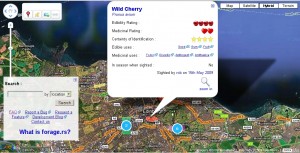As I just nibbled, IUCN’s book Conservation for a New Era is out. It
…outlines the critical issues facing us in the 21st century, developed from the results of last year’s World Conservation Congress in Barcelona.
You can download the pdf. Agriculture has a chapter all to itself, starting on page 160. It’s nicely balanced, and worth reading in full.
If we hope to maintain global biodiversity and a reasonable balance between people and the rest of nature, then agriculture needs to be part of the conversation.
On the other hand, conservation has much to contribute to sustainable agriculture.
The high point for me was the stuff on crop wild relatives (and indeed livestock wild relatives), in particular their potential role in breeding for climate change adaptation. Genebanks are mentioned in passing, but the specific need for ex situ conservation in the context of a rapidly changing environment is not, alas, highlighted. Crop improvement is recognized as a key response to climate change, but perhaps the link to diversity is not as explicit as might have been warranted.
Effective responses to climate change will require changing varieties, modifying management of soils and water, and developing new strategies for pest management as species of wild pests, their natural predators, and their life-cycles alter in response to changing climates.
I liked the paragraph on the role of agrobiodiversity in plant protection, though it missed a trick in not mentioning the importance of the genetic diversity of the crops themselves. There is the expected reference to multi-storey agroforestry systems, but also less-expected mentions of perennial crops and underutilized crops. There’s sensible stuff on biofuels, too (though not much in the agriculture chapter, actually).
So, a step forward in the integration of agriculture and agrobiodiversity into the global conservation agenda? I think so, though it could have been a bigger one. At least agriculture seems not to be seen exclusively as The Enemy.
